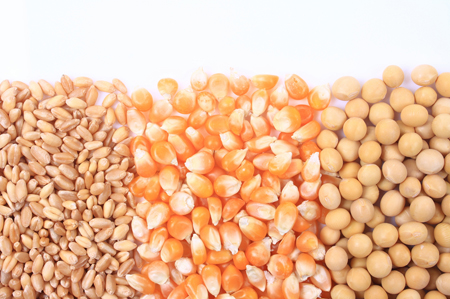Grains-Soybeans Rise on Slow U.S. Harvest, Wheat and Corn Down
Category: Grains

(Agriculture.com) – Chicago soybean futures rose on Wednesday as a slower than hoped pace of U.S. harvesting supported prices, but worries that U.S.-China trade talks are stalling limited gains. Wheat and corn fell as a stronger trend in the dollar dented U.S. export prospects. The Chicago Board of Trade most-active soybean contract was up 0.1% at $9.18 a bushel at 1226 GMT. Wheat fell 0.7% to $5.13-1/4 a bushel, having risen more than 2% on Tuesday on fears that cold U.S. weather would hit crops. Corn fell 0.3% to $3.76-1/2 a bushel. The U.S. Department of Agriculture (USDA) said after the market close on Tuesday that the U.S. soybean harvest was 85% complete, behind expectations of 87% and below the average of 92% for this point in the season. “Soybeans are seeing some support today from the slightly slower than expected progress with the U.S. harvest,” said Michael Magdovitz, senior agriculture commodities analyst at Rabobank. “But although below expectations, the pace of U.S. harvesting does not look like a serious problem.” The U.S. corn harvest was 66% complete, also behind expectations of 68% and the average 85%, the USDA said. “Soybeans are finding support due to the tail-end of harvest delays, although risk is actually bigger to the corn crop,” said Ole Houe of IKON Commodities in Sydney. President Donald Trump on Tuesday dangled the prospect of completing an initial trade deal with China soon. But rumours that he might announce a venue and date for the signing of any proved unfounded. “Soybean price increases are being stifled by lack of concrete news about progress in the U.S./China trade talks which could normalise U.S. soybean exports to China after a long disruption,” Magdovitz said. “The market wants more tangible indications of progress such as a date or location for the signing of a phase one trade deal or more Chinese purchases of U.S. soybeans before it is willing to react.” Wheat, corn and soy are all suffering from the export-punishing strength in the dollar coupled with selling after yesterday’s rises, Magdovitz said. “For corn, the dollar’s strength against South American currencies will mean export headwinds for U.S. supplies competing against South American corn in export markets,” he said. He added that U.S. wheat was being planted at a good pace. “The U.S. sowings are approaching completion and there seems to be few reasons for concern.” Some 92% of U.S. winter wheat was planted, a little below expectations of 93%, the USDA said.




